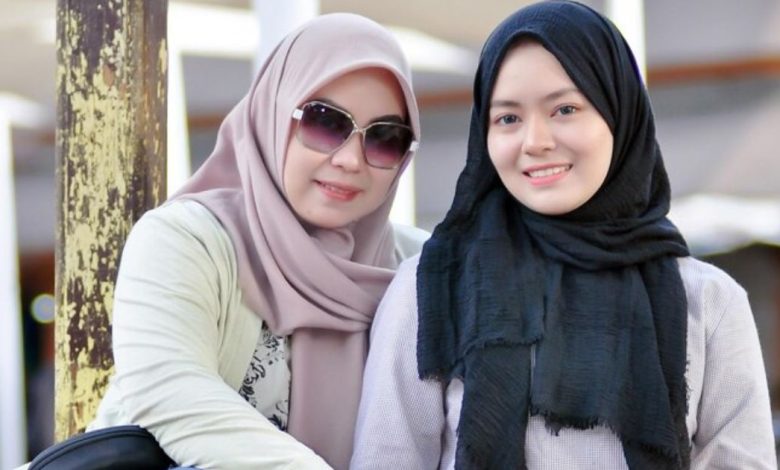Hijabhoojup: Understanding Its Significance and Cultural Impact

Hijabhoojup is a concept that has emerged within the broader conversation around hijab and modest clothing in various cultures. Although not as commonly discussed as the traditional hijab, the term is gaining recognition as an aspect of identity, spirituality, and cultural heritage. But what does it entail, and why is it becoming an important topic in discussions about modesty and faith?
The Origins of Hijab and Its Evolution
To understand Hijabhoojup, we first need to explore the hijab itself. The hijab, traditionally a headscarf worn by many Muslim women, has roots in Islamic teachings and practices that emphasize modesty. Derived from the Arabic word “hajaba,” meaning to hide or cover, the hijab serves as a symbol of privacy, dignity, and religious faith. Over time, different societies have reinterpreted the hijab’s significance, leading to diverse expressions of modest fashion.
Defining Hijabhoojup in Modern Culture
So, where does Hijabhoojup fit into this narrative? Hijabhoojup represents a personalized or culturally specific way of observing modesty through clothing and behavior. Unlike the universal image of the hijab, Hijabhoojup reflects the unique ways that various communities express their commitment to modesty while incorporating elements of their cultural background.
Why Hijabhoojup Matters
Understanding Hijabhoojup means acknowledging the diversity within Muslim communities and the different ways they practice modesty. This idea emphasizes that there is no one-size-fits-all approach to faith and cultural expression. It recognizes that practices of covering and modesty can be influenced by local traditions, environmental factors, and even personal interpretations of Islamic principles.
Cultural Variations in Modesty Practices
One of the most fascinating aspects of Hijabhoojup is how it highlights the vast array of clothing styles seen worldwide. For example, while some women wear a simple headscarf, others may adopt intricate and colorful wraps influenced by their heritage. In Southeast Asia, for instance, the hijab often comes in bright colors and patterns, while in the Middle East, the styles might be more subdued or uniform.
Impact of Geography on Hijabhoojup
Geography plays a significant role in shaping modesty practices. In colder regions, additional layers may be necessary, resulting in unique adaptations of traditional garments. Meanwhile, in warmer climates, lightweight fabrics become essential. These geographical factors shape how Hijabhoojup is expressed, showing the balance between adhering to religious beliefs and staying practical.
The Spiritual Aspect of Hijabhoojup
Beyond its physical form, Hijabhoojup holds a deep spiritual significance for many people. Wearing a form of modest dress is often viewed as an act of devotion, a way to strengthen one’s connection to God. This spiritual layer adds depth to the practice, transforming it from a cultural or traditional practice into a personal act of faith.
Fashion and the Rise of Modesty Movements
In recent years, the global fashion industry has taken note of the demand for modest fashion, contributing to the spread of Hijabhoojup. Fashion influencers and designers are creating garments that respect religious requirements while also being trendy. This intersection between faith and fashion has allowed young Muslims to express their beliefs without compromising on style, making modest clothing more accessible and varied than ever.
Social Media and the Spread of Hijabhoojup
Social media platforms like Instagram and TikTok have played a vital role in popularizing Hijabhoojup. Influencers and everyday users share their unique styles and interpretations, creating a digital space for discussion, inspiration, and cultural exchange. These platforms also provide a means of education, where people can learn about the cultural and spiritual importance of modesty in Islam.
Challenges Faced by Hijab-Wearers
Despite the growing acceptance of modest fashion, those who practice Hijabhoojup often face challenges. In some countries, wearing a hijab or any form of modest dress can be met with discrimination or negative stereotypes. Even within Muslim communities, debates over what is considered “appropriate” can add pressure on individuals, leading to conversations about personal choice and religious freedom.
Legal and Political Factors
The legal status of hijab and related practices varies widely across the world. In some nations, laws dictate whether or how a person can cover their head in public spaces. These laws have sparked global discussions on human rights, religious freedom, and the right to express one’s faith. Hijabhoojup, in this context, becomes more than a cultural expression—it becomes a statement of autonomy and belief.
The Role of Education in Promoting Understanding
Education is crucial in breaking down the misconceptions surrounding Hijabhoojup. Schools and institutions can play a part in fostering a more inclusive and respectful environment. Teaching students about different cultures, beliefs, and practices can create a more compassionate society that values diversity and respects individual choices.
How Hijabhoojup Fosters Community and Belonging
For many, adopting Hijabhoojup is a way to connect with their community. It symbolizes belonging and shared values, helping people feel closer to others who practice similar forms of modesty. Communities centered around faith and culture often provide support systems, making the practice of modest dress a unifying rather than divisive element.
Personal Stories and Perspectives
Hearing personal stories from those who practice Hijabhoojup can be enlightening. Each story reveals the different motivations, experiences, and challenges individuals face. Whether it’s about a woman choosing to wear a hijab despite societal pressures or someone adapting their dress code to suit their environment, these narratives add a human dimension to the conversation.
The Future of Hijabhoojup and Modest Fashion
As the world becomes more interconnected, the future of Hijabhoojup looks promising. The ongoing dialogue around modesty, identity, and fashion will continue to evolve. Designers are likely to innovate even further, creating garments that are both respectful of religious customs and aligned with contemporary trends. This evolution ensures that modest fashion will remain relevant and accessible.
Conclusion
Hijabhoojup is a nuanced and meaningful aspect of the broader discourse on modesty and cultural identity. It emphasizes the diversity within Muslim communities, illustrating that modest dress is more than a religious requirement—it is a personal, cultural, and spiritual journey. By fostering understanding and respect, we can create a world that celebrates these rich traditions.
FAQs
What does Hijabhoojup mean?
Hijabhoojup refers to a personalized way of observing modesty that blends religious beliefs with cultural influences.
How does Hijabhoojup differ from the traditional hijab?
While the traditional hijab is a headscarf worn for modesty, Hijabhoojup encompasses various cultural interpretations and clothing styles.
Why is Hijabhoojup important in today’s society?
It promotes cultural diversity, highlights personal choice in religious practices, and encourages respect for different expressions of faith.
How has social media influenced Hijabhoojup?
Social media has popularized Hijabhoojup by showcasing unique styles, sparking conversations, and creating a community of modest fashion enthusiasts.
What challenges do Hijabhoojup practitioners face?
They may encounter societal discrimination, misunderstandings, and legal restrictions in some regions, complicating the expression of their faith.




